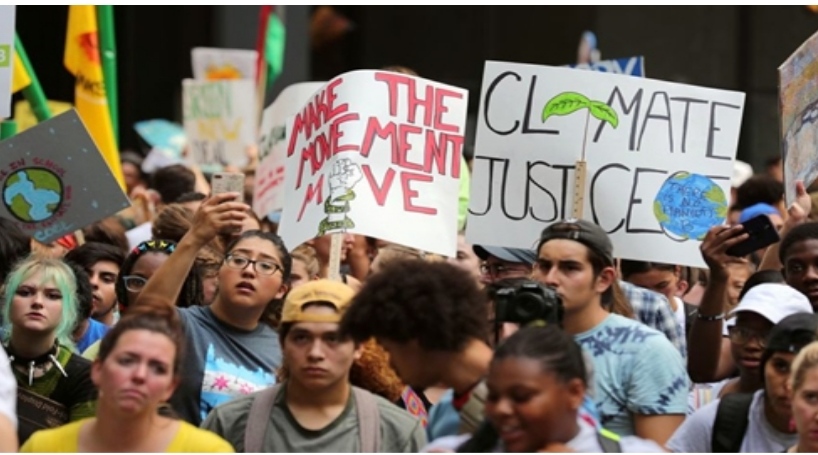Across US, drought arriving dangerously early as water becomes scarce
Severe dryness affects part of America

People participate in a strike to call attention to climate change in Chicago, the United States, on Sept. 20, 2019.
Lakes at historically low levels, unusually early forest fires, restrictions on water use and now a potentially record heat wave: even before summer’s start the US West is suffering the effects of chronic drought made worse by climate change.
Eighty-eight percent of the West was in a state of drought this week, including the entire states of California, Oregon, Utah and Nevada, according to official data.
In a particularly stark symptom of this trend, which is affecting more than 143 million Americans, Lake Mead, the country’s largest reservoir, now stands at its lowest level since its creation in the 1930s.
The lake, formed when the massive Hoover Dam was built across the Colorado River not far from Las Vegas, stands at just 36 percent of capacity, below even a record set in 2016.
Authorities expected something like this – but not until August.
The situation in northern California, which normally receives ample precipitation in the winter and spring, is no better. Lake Oroville, the state’s second largest reservoir and a key part of a network providing potable water to 27 million Californians, is 50 meters lower than in 2019.
Widespread water-use restrictions appear inevitable over the coming months, with potentially serious ramifications for Western states, in particular for irrigation-dependent farmers – who provide much of the country’s fruits and vegetables.
In California, whose vast almond groves supply 80 percent of world production, some farmers have already begun uprooting trees to save water.
As of April 1, the date traditionally marking the area’s last snowfall, the snowpack on the upper slopes of the Sierra Nevada – source of roughly a third of all water used in California – was at only 60 percent of average.
According to the US Drought Monitor, one third of California is currently experiencing “exceptional drought,” the worst level. And dry soils and water-deprived vegetation create the conditions for even higher temperatures, feeding a devastating vicious circle.
Not surprisingly, the southwestern US is bracing for an extreme heat wave this week, with temperatures some 11 Celsius higher than seasonal norms and with highs of up to 120 Fahrenheit expected in some spots.
Meteorologists have issued heat warnings, saying that Las Vegas, for example, could hit 115 Fahrenheit, surpassing a record established in 1940.
Authorities are particularly concerned about forest fires, which have arrived unusually in 2021 and with rare intensity. As of the end of May, fires in California had destroyed five times as much vegetation as they had in 2020 at this point.




